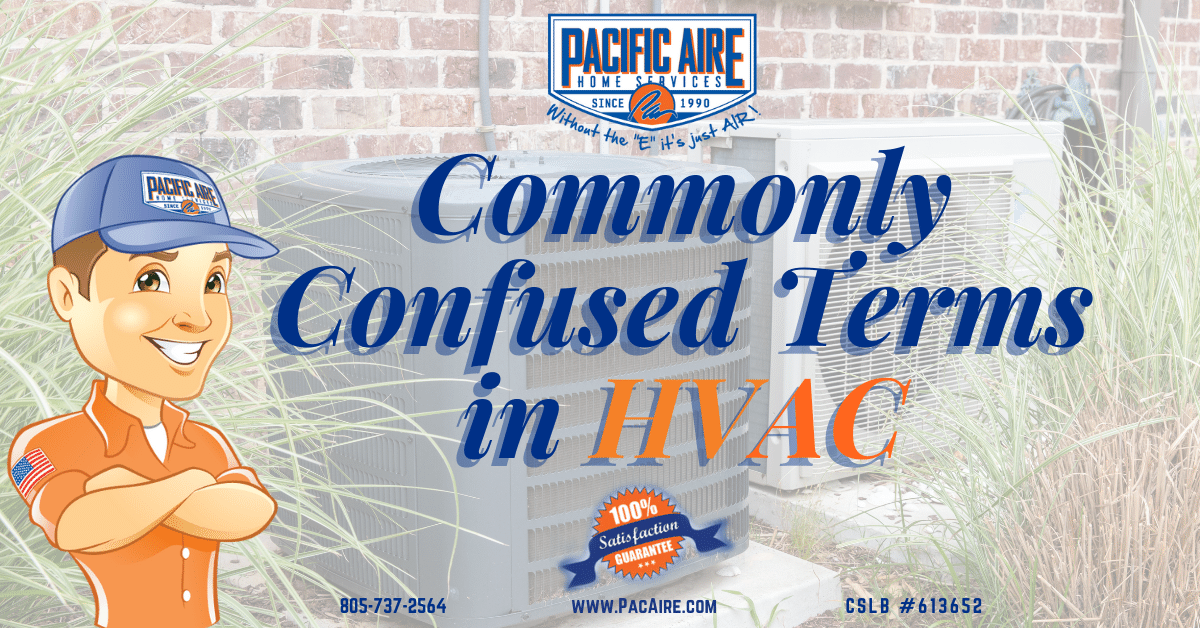How would you feel if you call an HVAC company’s customer service hotline and they described your problem in confusing terms? Did you ever encounter an HVAC technician using words you didn’t understand? When your HVAC technician or a customer service representative starts speaking in technical terms that you’re not familiar with, it is not uncommon for you to feel overwhelmed. However, you need to know what is being discussed when it comes to your unit’s HVAC parts.
We care about ensuring that our customers like you are well-informed about your cooling and heating systems. Don’t worry, we listed the most commonly confused HVAC terms in this article to help you. Let’s go over some HVAC terminology that you might not recognize.
Compressor vs. Condenser
A compressor is a mechanical device that is similar to pumps that increases the pressure of refrigerant gas.
2 Types of Compressors:
Reciprocating Compressor uses a piston action to compress refrigerant in cooling systems.
Scroll compressors are more popular than reciprocating compressors because they have fewer moving parts. As it can be used in lower and higher efficiency air conditioners, they operate more smoothly, quietly, and reliably than the Reciprocating Compressor.
Condenser is the hot and outer portion of an air conditioner or heat pump that can transfer heat from it to the air. Heat is either released or collected, depending on the season. It is the heart of the system as it compresses the refrigerant and pumps it to a coil in the form of a hot gas.
Condenser Coils are typically located outdoors. During the summer season, it removes heat from the refrigerant which allows it to be converted from vapor to liquid and complete the cooling process.
All About Fans
There are different fans related to HVAC. What does each do? What kind of different fans are there?
Attic Exhaust Fan is a ventilation fan that works by exhausting warm air in order to regulate the temperature of your attic. The fan is typically turned off and on automatically with a thermostat or manually with a switch. It is possible to mount an attic fan on a gable or on a roof. The exhaust of hot air requires additional vents to draw in fresh air. The use of an attic fan is common during warmer months.
Condenser Fan increases and accelerates movement of air over the condenser coil which removes heat from the refrigerant.
The blower in the furnace is one of the most appropriately named parts in your furnace: it has only one job and that is to blow heated or cooled air into your home through the ducts. They are often referred to together as the “blower” collectively. In a furnace, it is usually found near the base in the blower chamber, looking like a hamster wheel.
All About Vents
The air ducts in your home are hidden behind walls. The vents connect virtually every room of your house and provide a path for air to travel to and from your HVAC system. You’ll find two types of vents on your walls if your home has central heating and cooling.
Return vents pull air from each room and send it back to the air conditioning or heating system. You won’t feel air coming from a return vent because they are generally larger than a supply vent. An HVAC system increases the room’s air pressure when it delivers air to the room. The purpose of return vents is to remove the extra air.
Supply vents blow air into each room. The conditioned air travels through ductwork and is expelled through supply vents derived from your AC or furnace. You can identify them easily, as these are the only vents where conditioned air blows out.
Multiple filters may be used in a central heating and cooling system. Air filters prevent contaminants from entering the equipment and must be maintained or replaced regularly. The refrigeration system also contains a filter, also known as a drier that removes dirt and unwanted particles from the system.
Exhaust vents – Gas furnace vent pipes remove toxic gases that occur during the furnace combustion process.
Ductwork pertains to a network of metal or synthetic tubes used to carry air from heating, ventilation and air conditioning units around your home. Indoor air quality and home comfort are dependent on properly installed and maintained air ducts.
In the HVAC industry, there are a lot of other terminologies that can create confusion and can be overwhelming. It’s better to understand the HVAC jargon, to avoid unnecessary repairs because of a misunderstanding.


